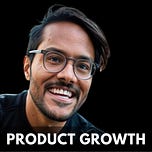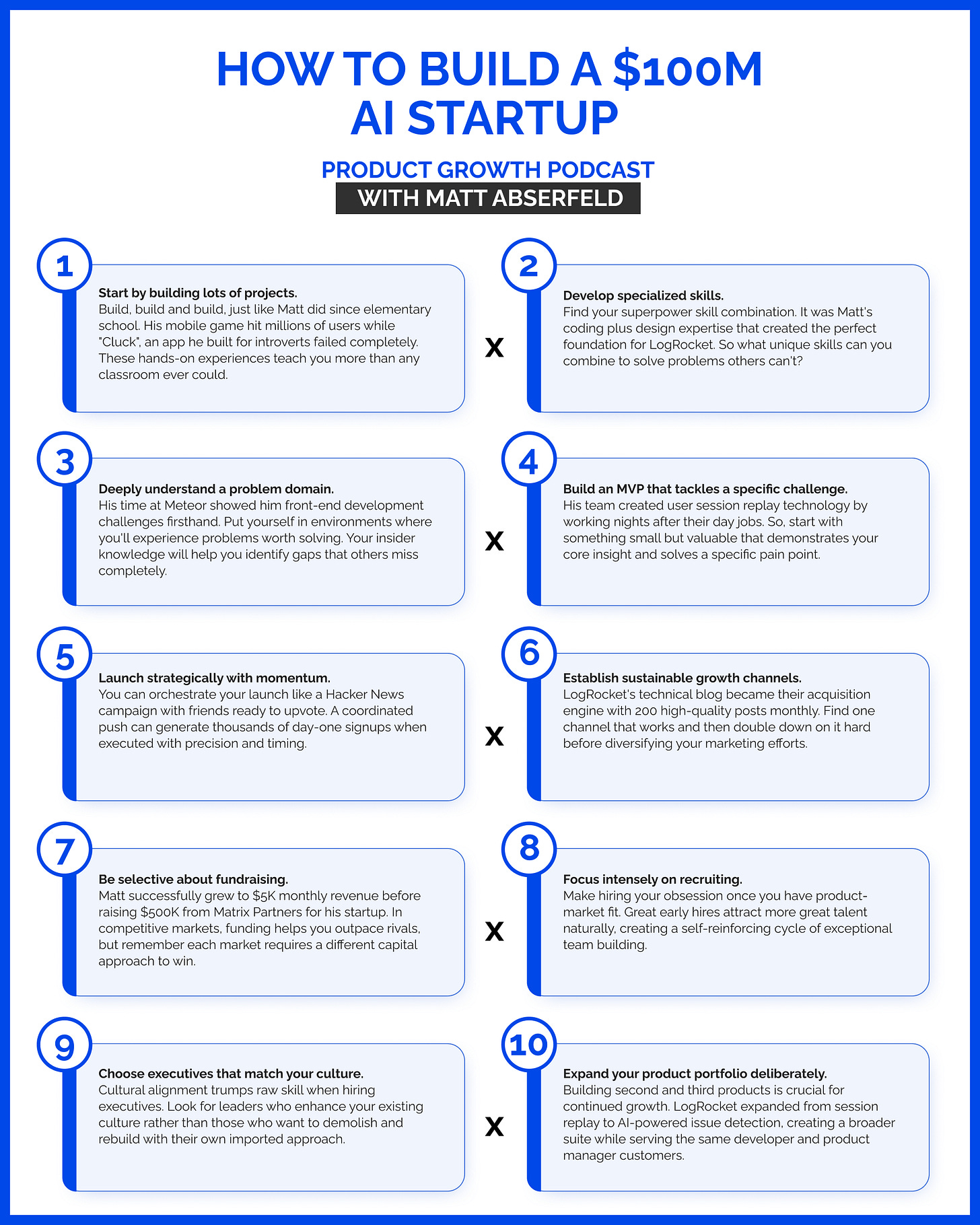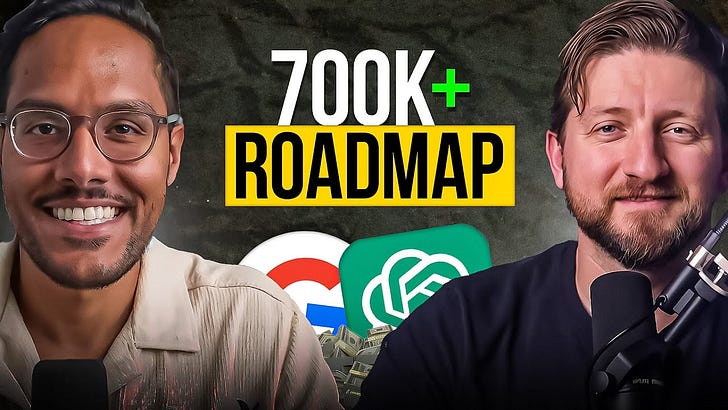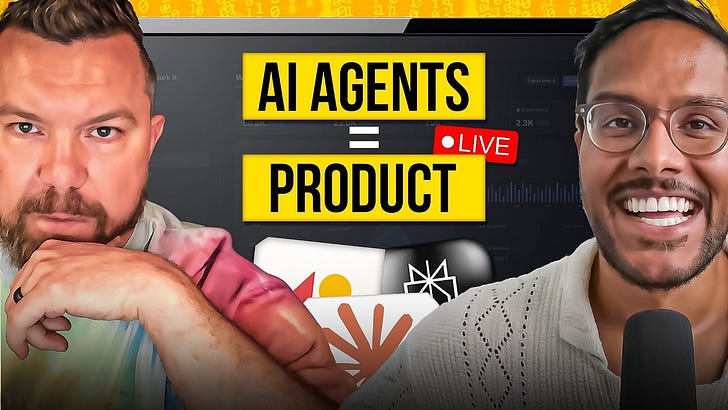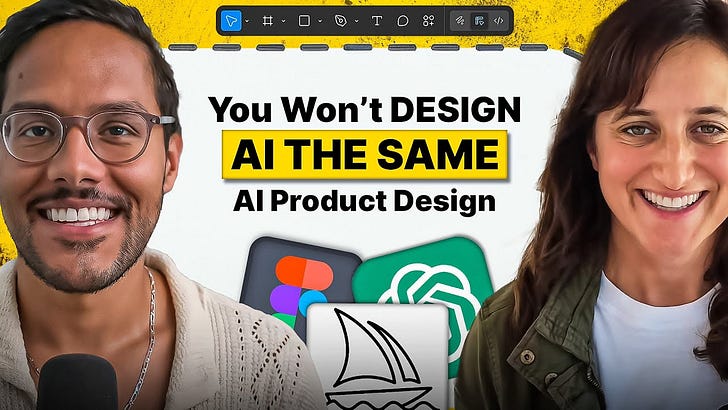Check it out on Apple, Spotify, or YouTube.
And thanks to our sponsors:
Today’s Episode
If you’ve ever thought you’re a great PM and should build something of your own with AI, today’s episode is for you.
Matt, who built a $1B+ AI product company LogRocket, shares the full roadmap of his journey on:
How to build an $100M AI company
How to grow it from 0 to 1,000 customers
Then, how to hyper-scale it
We also cover other aspects like fundraising timing, recruiting strategies, and product expansion.
It’s literally a crash course on building a $100M AI company.
The 15-Step Framework
Step 1: Build Projects
Before founding anything, Matt spent years building projects on his own. From trading food at lunch in elementary school to developing mobile games in college that reached millions of users.
The key? "Just trying stuff and building things" to develop your skills as a creator and entrepreneur.
Even his failed app "Cluck" taught him valuable lessons about what doesn't work in the market.
Step 2: Develop Skills
Identify what you're exceptionally good at—what could be your unique contribution to the world. For Matt, it was coding and design, skills he'd been nurturing since middle school.
"Find something you care about, go deep, and become an expert in that field," he advises.
These fundamental skills will form the foundation of whatever company you start.
Step 3: Find Opportunities
As you gain experience, you'll start noticing problems that need solutions. Matt's time at Meteor (a JavaScript framework company) exposed him to front-end development challenges, which eventually led to LogRocket.
The key insight: immerse yourself in specific domains to identify valuable problems worth solving.
Get comfortable diving deep into industry pain points rather than chasing surface-level ideas.
Step 4: Build MVP
Matt and his co-founder built their MVP while living together, going from concept to working product in one summer.
They realized they could track everything users were doing on websites and play it back to diagnose issues.
The initial idea simply matched new technical possibilities with problems they'd identified in the market.
Step 5: Launch Strategy
LogRocket's successful launch on Hacker News resulted in thousands of signups, even though they only had a beta list.
They planned meticulously, getting friends to upvote and participate in discussions.
Matt notes that while initial buzz is important, the product must be genuinely useful for lasting success.
Step 6: Raise Funding
After reaching around $5,000 in monthly revenue while still in college, Matt learned they could raise capital to accelerate growth.
Their first formal investment from Matrix Partners gave them runway to work full-time on LogRocket.
Matt suggests starting with student-focused programs like Rough Draft Ventures or Dorm Room Fund, then leveraging entrepreneur networks.
Step 7: Growth Channels
Once you launch, you need sustainable customer acquisition beyond the initial spike. LogRocket built a blog addressing pain points of front-end developers.
"Quality is super important," Matt emphasizes. "No one wants to read a blog post that doesn't answer their question."
They scaled to writing 200 high-quality posts monthly, creating a powerful organic acquisition engine.
Step 8: Build Teams
Recruiting becomes a founder's primary job as you grow. "To build something great, you need an amazing team," Matt says.
They invested heavily in creating a strong culture that attracted talent.
"Once you have 10 great people, the 11th person who sees that team is compelled to join."
Step 9: Hire Executives
As priorities multiply, you need to delegate. Matt first promoted from within, then hired externally.
He emphasizes culture fit: "These are your partners. It should be almost like a marriage."
His advice: hire people who share your values and mindset—skills can be developed, but misalignment in approach creates friction.
Step 10: Funding Growth
If you're in a competitive market, raising additional capital allows you to invest ahead of revenue and keep pace with competitors.
"The last thing you want is to say the thing didn't work because we didn't raise money," Matt explains.
He's raised four rounds throughout LogRocket's journey, creating cushion for growth investments.
Step 11: Second Product
LogRocket's second product used AI to automatically analyze session recordings for user friction points—a natural extension of their core offering.
The challenge? Getting through the "disillusionment" phase when usage is initially low.
Matt advises patience and conviction in your vision until the product gains traction.
Step 12: Expand Marketing
No marketing channel lasts forever. LogRocket saw this coming when they realized their blog wouldn't grow indefinitely (especially with the rise of ChatGPT).
They experimented with trade shows, LinkedIn, and YouTube, placing multiple bets simultaneously.
The strategy: double down on what works while shuttering unsuccessful channels after about six months.
Step 13: Product Portfolio
The modern SaaS playbook has evolved—companies now launch many more products than previously. "Spaces are getting wider and more distributed," Matt notes.
LogRocket expanded into product analytics, adding funnels, heatmaps, and journey analytics to their portfolio.
He suggests dedicating engineers to exploring new product categories earlier than you might think necessary.
Step 14: Develop Partnerships
As you grow, you need to build moats against competition. "Someone could always clone what you're doing," Matt admits.
LogRocket's strategy? Building integrations and partnerships with adjacent companies in their ecosystem, like Expo, Intercom, and Zendesk.
These interconnections create a defensive network that becomes increasingly difficult for competitors to replicate.
Step 15: Global Domination
The ultimate goal: "You want everyone in the world using your product." While LogRocket isn't there yet, their mission is to be on every website.
Matt believes that if you build something truly great, you should want everyone to experience it.
This aspirational endpoint keeps the team motivated toward continuous growth.
My Favorite Takeaways
The Reality Check: Founder Struggles
Despite his success, Matt was refreshingly candid about the challenges:
"There's a constant stress of starting a company because you're bombarded with problems every single day."
The biggest struggle isn't any specific low point but "the ongoing grind of dealing with problems."
His advice for starting today? Look for AI-enabled services that solve real problems—areas where full automation isn't quite possible yet, but where you can combine AI capabilities with human quality assurance to deliver superior solutions.
What step are you currently focused on in your entrepreneurial journey? Reply to this email and let me know—I'd love to hear where you are in this process!
Where to Find Matt
If you prefer to only get newsletter emails, unsubscribe from podcast emails here.
If you want to advertise, email productgrowthppp at gmail.
Related Content
Newsletters:
Podcasts:
Up Next
I hope you enjoyed the last episode with Phyl Terry (Author, Never Search Alone). Up next, we have episodes with:
Andy Carroll - 15 years in PM, Vibe Coding Expert
Roger Martin - Author, Playing to Win
Jeremy Epling - CPO, Vanta
Finally, check out my latest deep dive if you haven’t yet: How Productboard Grows
Cheers,
Aakash
P.S. If you found this valuable, please forward it to a friend who might benefit from these insights!

